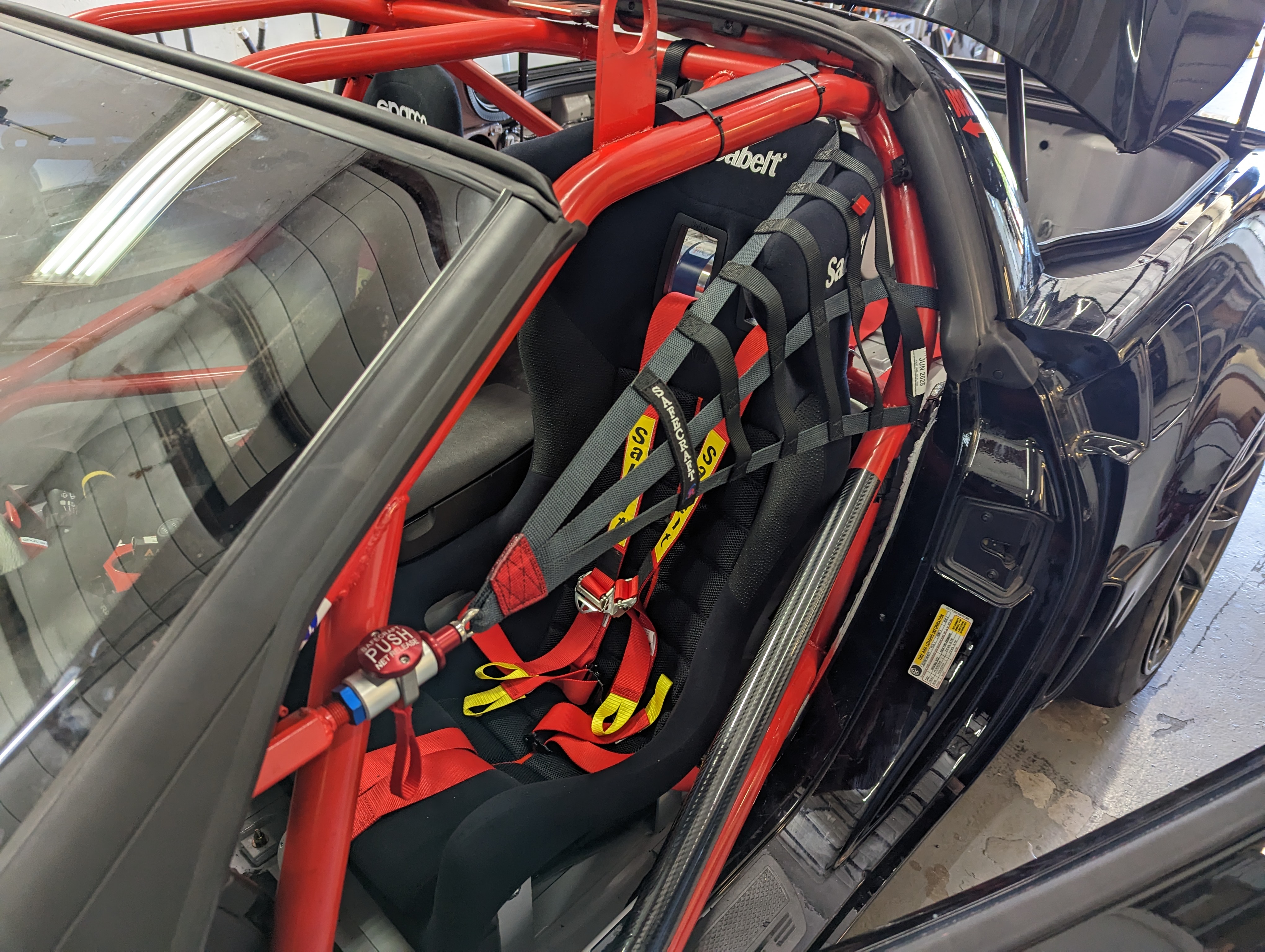Racing Cages
ROLL CAGES
Roll bars and roll cages are designed to protect the driver from injury during an accident. This is the first line of defense for the driver. Roll cages and roll bars come in all shapes and sizes. This depends mostly on the chassis being built and the rules that govern its class. A secondary function is a much more rigid chassis.
Roll Bars
Roll Bars are 4 point. This just means the bar attaches to the chassis at four strong points. They consist of the main hoop, harness bar and two rear bars. Most also have a diagonal bar to help protect the driver in a roll over incident. Roll bars are a good choice for cars that still see street duties or cars that run slower than 10 seconds in the quarter mile for drag racing. Materials range from mild steel to chromoly.
Roll Cages
Roll cages typically start at 6 points. This involves: a pillar bar, a fire wall bar, a halo, main hoop, cross bar, door bars, and rear bars. This is the most common cage for a race car. Depending on the class and weight of the vehicle the tubing diameter used varies. Deciding which material to use is also based on weight of the vehicle and the class in which it will be raced. To be sure that you are getting the proper cage always consult the sanctioning bodies rule book. Other cages can involve 8-12 point that anchor to the chassis. Some are even integrated with the chassis like NASCAR. These are most commonly referred to as tube framed cars.
In selecting a roll bar or roll cage, first determine what kind of racing you will be participating in. You have many types to choose from such as rally racing, drag racing, road racing, auto-cross or any other of the various types of auto sports. After you have selected what type of auto sport you’ll be participating in, follow the rules for that sanctioning body and class you’ll compete in and what type of cage/roll bar is required. The rules will dictate what point cage, what material you can use, and what diameter tubing options are allowed.
The two most common materials used are mild steel and chromoly. Mild steel (DOM) is a very popular material for roll cages due to the price and its ability to be MIG or TIG welded. It comes in a variety of diameters. It is the heavier of the two in the same diameter and thickness, but is also less expensive. Chromoly is lighter in weight for the same diameter and thickness, but the cost associated with welding chromoly (it needs TIG welded) is much higher than mild steel. Many bodies state a Chromoly cage needs to be replace every 5 years do to fatique. The raw material cost of chromoly is also higher. Again the sanctioning body rules will help you determine what material you are required to use.
Depending on which material is selected for the cage also determines what type of welding will be used. TIG and MIG welding are the accepted methods and each have pros and cons.
When fabricating a cage, no interior is recommended unless otherwise stated by your specific sanctioning body. To start, we will determine where the main hoop and harness bar should be located. This is done by sitting the driver and the seat of their choice in the car to find their favored driving position. The harness manufacture chosen and the use of a head restraint system such as the HANS device will also help us determine the harness bar location. From there, boxes/plates will be fabricated and installed accordingly to anchor the tubing to the chassis. These are formed from mild steel or Aluminum depending on the frame of the car, and are welded into place. The mounting points are carefully chosen in the strongest part of the car. The boxes/plates give the mounting points more surface area and gives the cage a firm, rigid platform to stand. The chassis needs to be prepped before the plates/boxes are welded in place.
All undercoating and paint must be removed in and around the boxes/plates. This allows for good penetration when welding.

